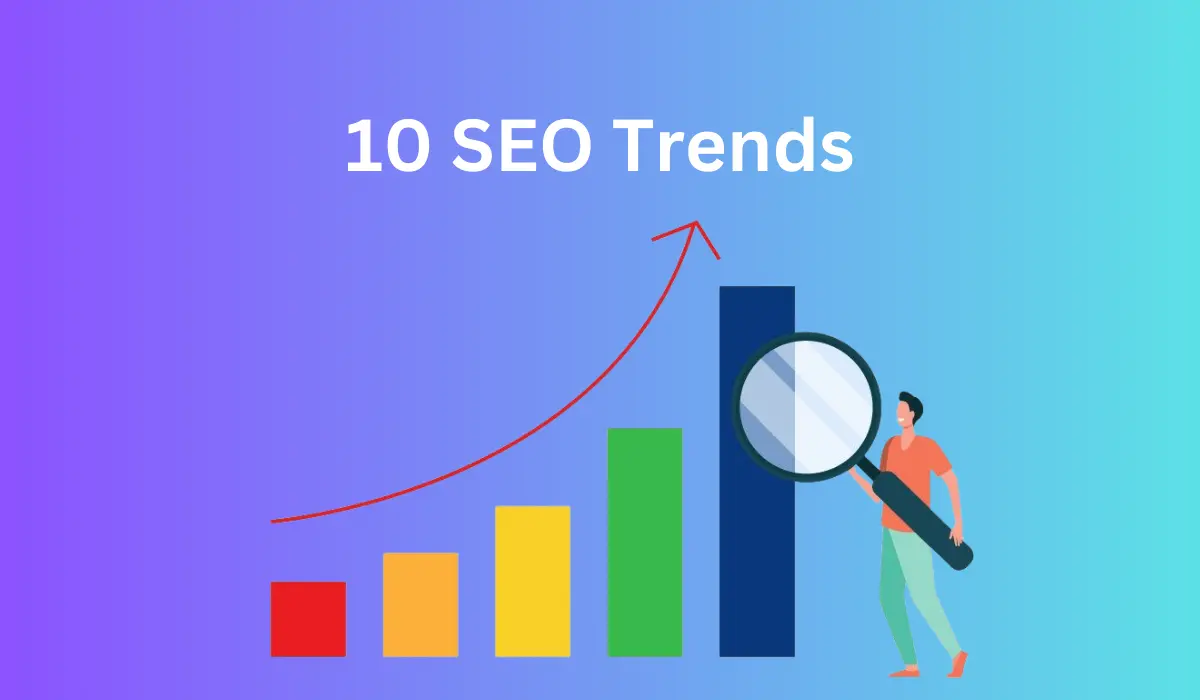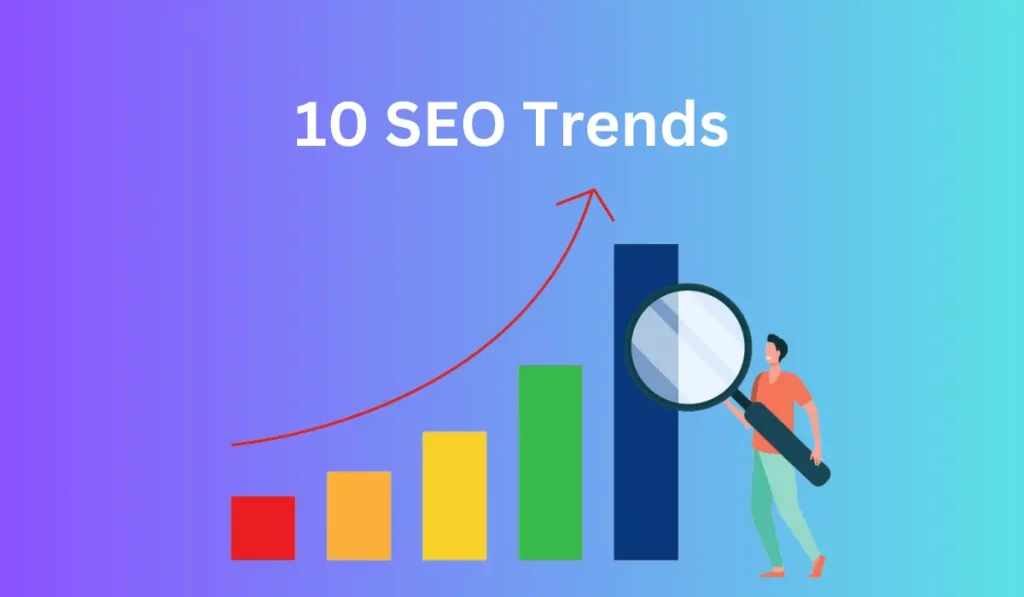Search Engine Optimization (SEO) is a dynamic field that continually evolves in response to changes in technology, user behavior, and search engine algorithms. As we look ahead, the future of SEO promises exciting developments that will reshape the way businesses optimize their online presence. In this article, we explore the top 10 key trends in SEO that are expected to dominate the coming years.
Importance of Using New and Trendy Tactics for Successful SEO Campaign?
The importance of using new and trendy tactics for a successful SEO campaign lies in the dynamic and ever-evolving nature of the digital landscape. SEO is not a one-time effort but an ongoing process that requires adaptability and responsiveness to changes in technology, user behavior, and search engine algorithms. Here are several reasons why staying updated with new and trendy SEO tactics is crucial:
Adaptation to Algorithm Changes:
Search engines frequently update their algorithms to improve the relevance and quality of search results. By adopting new and trendy SEO tactics, businesses can align their strategies with the latest algorithm updates, ensuring that their content remains visible and ranks well on search engine results pages (SERPs).
Competitive Edge:
Embracing innovative SEO tactics provides a competitive advantage. In a crowded digital space, staying ahead of competitors requires the adoption of cutting-edge strategies that not only meet current standards but also anticipate future trends. This helps businesses stand out and attract more organic traffic.
User Experience Optimization:
New SEO trends often revolve around enhancing user experience. Search engines prioritize websites that offer a positive and seamless user experience. By incorporating the latest tactics, businesses can optimize their websites for faster loading times, mobile responsiveness, and other factors that contribute to a better user experience.
Catering to Changing User Behavior:
User behavior on the internet evolves, and search habits change over time. New SEO tactics take into account shifts in user preferences, such as the increasing use of voice search, mobile browsing, and different types of content consumption. Adapting to these changes ensures that businesses remain relevant and accessible to their target audience.
Maximizing Opportunities in Emerging Platforms:
The digital landscape is not static, and new platforms and technologies continually emerge. Utilizing trendy SEO tactics enables businesses to explore and maximize opportunities on emerging platforms, social media channels, and other online spaces where their target audience may be present.
Content Relevance and Freshness:
Search engines value fresh and relevant content. Keeping up with new SEO tactics involves regularly updating and refreshing content to align with current trends and user expectations. This not only improves search rankings but also maintains audience engagement.
Enhanced Visibility and Brand Authority:
New and trendy SEO tactics often involve strategies to enhance visibility across various channels. This may include optimizing for featured snippets, leveraging video content, and participating in emerging trends. Increased visibility contributes to building brand authority and credibility.
Algorithmic Preferences:
Search engines increasingly favor certain types of content and presentation formats. For instance, Google’s preference for mobile-first indexing and the importance of core web vitals demonstrate algorithmic preferences that businesses need to consider in their SEO strategies.
Local and Global Relevance:
Local and global relevance is crucial for businesses operating in specific markets. New SEO tactics take into account the importance of local SEO, geotargeting, and international optimization strategies to ensure businesses remain visible and competitive in relevant regions.
Data-Driven Decision Making:
Trends in SEO often involve leveraging data analytics tools and insights for informed decision-making. By adopting new tactics, businesses can use data to refine their strategies, understand user behavior, and optimize their online presence based on real-time information.
The importance of using new and trendy tactics for a successful SEO campaign lies in the ability to adapt to changes, stay competitive, and meet the evolving needs of both search engines and users. Regularly updating and refining SEO strategies based on the latest trends is essential for sustained online visibility and business success in the dynamic digital landscape.
Also Read:
Trends in SEO
The SEO field is dynamic, and new trends may have emerged since then. To stay current, always monitor industry updates and adapt your strategy accordingly. Here are some prevailing SEO trends:
Stay vigilant about industry updates, algorithm changes, and emerging technologies to adapt your SEO strategy effectively. Regularly assessing and refining your approach based on the latest trends is key to staying competitive in the ever-evolving field of SEO.
Top of Form
Artificial Intelligence (AI) Integration:
AI is set to play a pivotal role in the future of SEO. Machine learning algorithms are becoming increasingly sophisticated in understanding user intent, behavior, and content relevance. AI-driven tools will automate tasks like keyword research, content optimization, and even user experience enhancement, allowing SEO professionals to focus on strategy and creativity.
E-E-A-T (Experience, Expertise, Authoritativeness, Trustworthiness):
Google places a high value on content that demonstrates experience, expertise, authoritativeness, and trustworthiness. Future SEO efforts will focus on establishing and showcasing these qualities to both users and search engines. Building a strong online reputation, leveraging authoritative backlinks, and creating expert-level content will be integral to success.
Voice Search Optimization:
With the rise of virtual assistants and smart speakers, voice search is gaining prominence. Optimizing content for natural language queries and conversational tone will become essential. As more users turn to voice-activated devices, businesses will need to adapt their SEO strategies to accommodate this shift in search behavior.
Core Web Vitals and User Experience:
Google’s emphasis on user experience is expected to intensify with the importance of Core Web Vitals. Factors like page loading speed, interactivity, and visual stability are now integral to search rankings. SEO will increasingly involve optimizing websites for a seamless and fast user experience, ensuring that visitors can access information quickly and efficiently.
Mobile-First Indexing:
The mobile-first approach is no longer a choice but a necessity. As the majority of users access the internet through mobile devices, search engines prioritize mobile-friendly websites. Future SEO strategies will revolve around mobile-first indexing, responsive design, and ensuring that content is as accessible and engaging on smartphones as it is on desktops.
Video Content Optimization:
Video content continues to dominate online consumption, and search engines are taking notice. Optimizing video content for search engines, including detailed descriptions, transcripts, and engaging thumbnails, will be a key aspect of SEO. Video SEO strategies will be essential for businesses looking to harness the power of visual storytelling.
Structured Data and Schema Markup:
Search engines are increasingly relying on structured data to understand the context and relationships within content. Implementing schema markup enhances the chances of appearing in rich snippets and other prominent search features. Future SEO will involve a strategic use of structured data to provide search engines with a deeper understanding of website content.
Local SEO and Google My Business Optimization:
The importance of local SEO is set to grow, especially for businesses with physical locations. Optimizing Google My Business profiles, local citations, and ensuring accurate business information will be critical. Local search algorithms will become more refined, offering users highly relevant results based on their location.
Zero-Party Data for Personalization:
With privacy concerns and changes in data regulations, focusing on zero-party data (data explicitly provided by users) for personalization can become more prevalent. Understanding user preferences can lead to more targeted and effective SEO strategies.
Search Intent Diversification:
Beyond traditional text-based searches, diversification in search intent, including image and video searches, is on the rise. SEO strategies should encompass various content types to cater to different search preferences.
Conclusion:
As the digital landscape evolves, SEO professionals must stay attuned to these emerging trends to remain competitive. The future of SEO is dynamic, driven by advancements in technology and the ever-changing preferences of online users. Embracing these trends will not only improve search rankings but also enhance the overall online visibility and success of businesses in the years to come.





